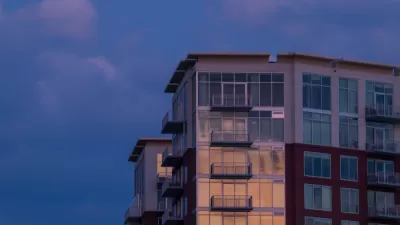New data reveals how far the U.S. housing market has stayed from anything resembling normal.

"Much of the housing market has gone missing."
That's the provocative lede of a story by Emily Badger and Quoctrung Bui that quantifies the state of the national for-sale housing market. Homes that usually would have been up for sale are staying off the market—about half as many homes are available for sale right now as last winter, according to the article.
The story is the same in markets historically defined by much different dynamics—so inventory is down in Atlanta, Austin, Chicago, and Cleveland, for example. The decline in inventory is "record shattering," according to the article, and it follows years of erosion in the national housing inventory. "This picture is a product of the pandemic, but also of the years leading up to it," according to Badger and Bui.
Analysis cited in the article chalk up the unprecedented status of the market to the tricky dynamics on the supply side during the pandemic. "Who wants to sell a house in the middle of a pandemic?" says Benjamin Keys, an economist at the Wharton Business School at the University of Pennsylvania. According to Ralph McLaughlin, the chief economist at Haus, a housing finance start-up, who is also quoted int eh article, every market that's withheld from the market creates an incentive for others not to sell their homes.
Then there's the economic woes, which is contributing to an inability of many homeowners to make their mortgage payments.
"At the peak, more than four million homeowners with government-backed loans were in mortgage forbearance during the pandemic (about 2.6 million still are). While that government policy, recently extended through June, has been a lifeline for many families who’ve lost income, it has also meant that some homes that most likely would have come on the market over the past year, either through foreclosure or a forced sale, did not."
The article is built on data from Altos Research, a real-estate market tracking firm, and includes infographics and a lot more historical and economic context for the current state of the housing market.
FULL STORY: Where Have All the Houses Gone?

Alabama: Trump Terminates Settlements for Black Communities Harmed By Raw Sewage
Trump deemed the landmark civil rights agreement “illegal DEI and environmental justice policy.”

Study: Maui’s Plan to Convert Vacation Rentals to Long-Term Housing Could Cause Nearly $1 Billion Economic Loss
The plan would reduce visitor accommodation by 25% resulting in 1,900 jobs lost.

Planetizen Federal Action Tracker
A weekly monitor of how Trump’s orders and actions are impacting planners and planning in America.

Waymo Gets Permission to Map SF’s Market Street
If allowed to operate on the traffic-restricted street, Waymo’s autonomous taxis would have a leg up over ride-hailing competitors — and counter the city’s efforts to grow bike and pedestrian on the thoroughfare.

Parklet Symposium Highlights the Success of Shared Spaces
Parklets got a boost during the Covid-19 pandemic, when the concept was translated to outdoor dining programs that offered restaurants a lifeline during the shutdown.

Federal Homelessness Agency Places Entire Staff on Leave
The U.S. Interagency Council on Homelessness is the only federal agency dedicated to preventing and ending homelessness.
Urban Design for Planners 1: Software Tools
This six-course series explores essential urban design concepts using open source software and equips planners with the tools they need to participate fully in the urban design process.
Planning for Universal Design
Learn the tools for implementing Universal Design in planning regulations.
Caltrans
Smith Gee Studio
Institute for Housing and Urban Development Studies (IHS)
City of Grandview
Harvard GSD Executive Education
Toledo-Lucas County Plan Commissions
Salt Lake City
NYU Wagner Graduate School of Public Service





























